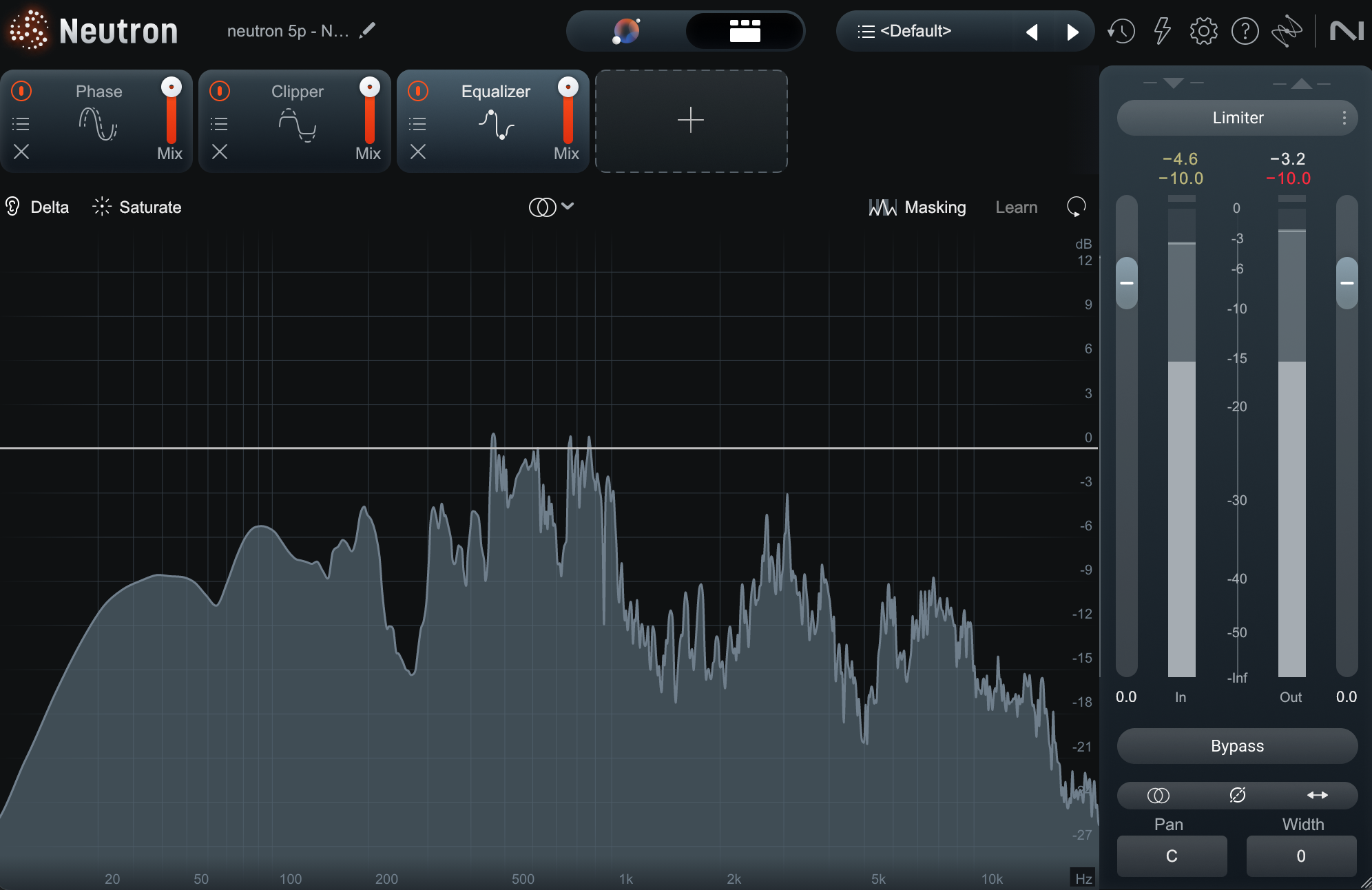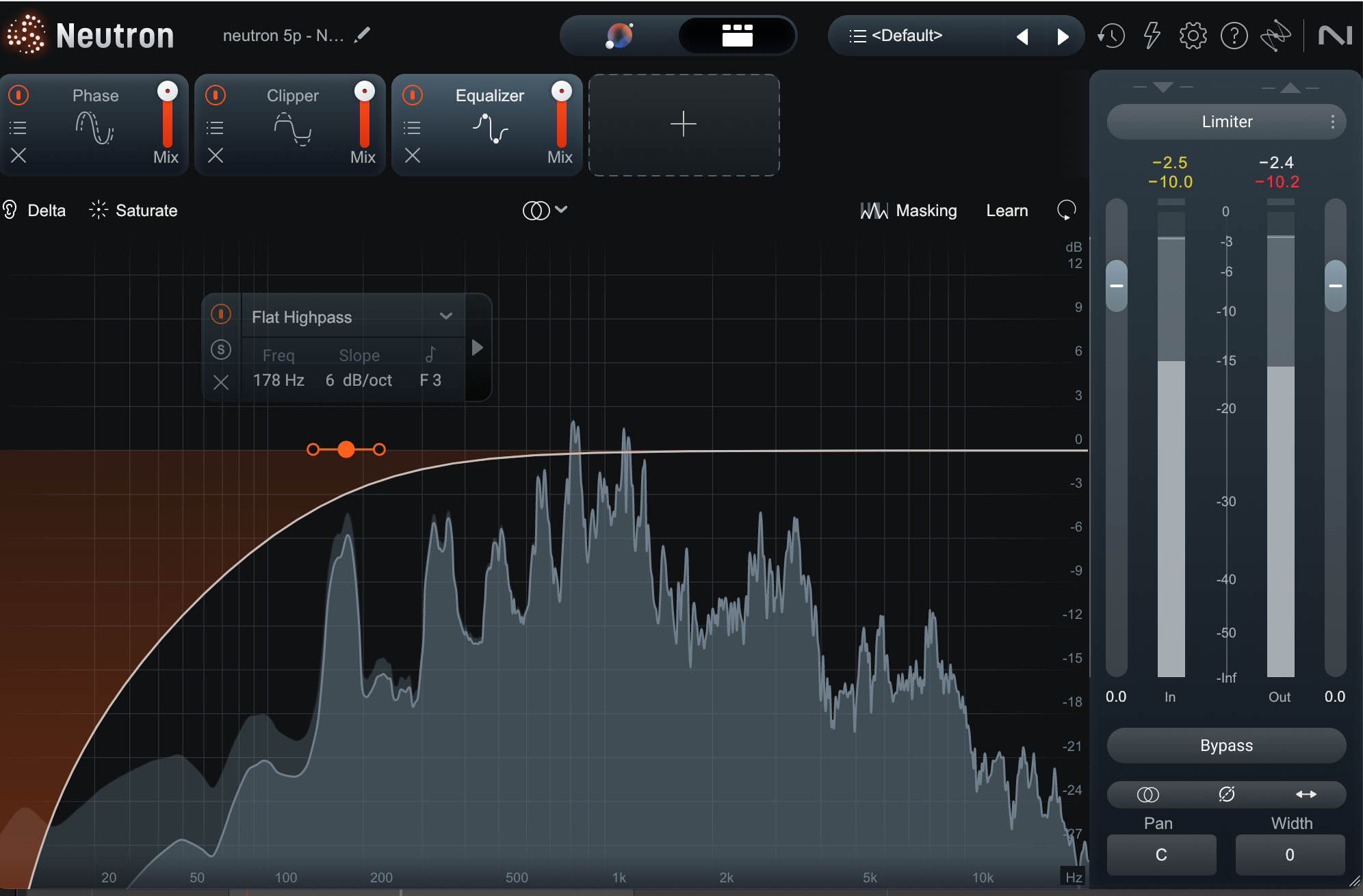
6 ways to use a high-pass filter when mixing
Unlock the clarity of high-pass filters without sacrificing your mix's integrity. Learn the right way to use them and avoid common pitfalls.
A high-pass filter is an EQ curve used to remove low-frequency sounds from an audio signal. We call it a high-pass filter because it allows high-frequency signals to pass through, while attenuating (reducing the amplitude of) lower-frequency signals.
High-pass filters are fantastic for removing muddiness and tightening up arrangements. When used incorrectly however, they can strip the life and groove right out of your music. To help you understand the high-pass filter, here are six ways to use them while mixing.
Follow along with this tutorial using


Neutron


Ozone Advanced


Music Production Suite 7
Discover Music Production Suite
What’s the difference between a high-pass filter and a low-pass filter?
A high-pass filter removes frequencies below a certain cutoff point, allowing higher frequencies to "pass" through, effectively cutting out low-end rumble and muddiness.
Conversely, a low-pass filter removes frequencies above a certain cutoff point, allowing lower frequencies to "pass" through, often used to tame harsh high frequencies or create a "muffled" effect.
Now that you got the low-down on high-pass terminology, let’s move on to our main event:
How to use a high-pass filter
High-pass filters eliminate unnecessary low-end buildup, improving clarity and allowing bass-heavy instruments to stand out.
Let’s explore a few of these scenarios in greater detail:
1. Remove low end rumble
Almost all audio sources, especially of the live variety, include unwanted sounds that lurk below the most important frequency information.
As we get to the lowest parts of the spectrum around 20–40 Hz, we might not even perceive rumble due to the limits of our hearing, making it a silent headroom killer in large quantities. A bunch of tracks all piling on 20–40 Hz might rob your limiter of its ability to help you achieve commercial loudness in your mix.
Let me show you a vocal, analyzed in Neutron:

Neutron showing low end rumble
See that low-end bump below 100 Hz? It’s low end rumble. It won’t help us much.
This noise doesn’t come up so clearly on a pair of earbuds. But on a pair of full range monitors, it does. My limiter also hears it and reacts accordingly.
More importantly, I’ve heard it and deemed it undesirable, so down it goes.

Vocal with flat high-pass
Take your time to scope out where these sneaky sounds are hiding.
As you remove them, remember to be very careful where you set the filter – the place we often call “the corner frequency.” You can’t just use the same setting for every track in your mix. What worked on one instrument might grab too much meat off a guitar or not enough from a vocal.
Pro tip: If you’re using Neutron and have trouble determining just how high you should cut, hit command (or control for PC) and select the lowest node, which will “solo” the band of frequencies it covers. Sweep up until you start to reach the tonal part of the instrument, and then pull back slightly. Now release the key to hear the entire signal. You want the noise to be gone without compromising the intelligibility or power of the audio.
2. Use a high-pass filter to give your low-end instruments their space
One of the most critical roles of a high-pass filter is to clear out unnecessary low end from tracks that don’t need it. This not only tightens up the mix, but also ensures that the kick and bass – the foundation of your arrangement – have the space they need to shine.
By high-passing instruments that aren’t contributing to the low end, you can create a cleaner, more powerful mix with a well-defined low-frequency range.
This may look similar to the previous tip, but here we’re thinking about everything playing all at once, rather than spots of rumble here or there. We’re talking about clearing the way for our bassier instruments so they’re not clouded or obstructed.
Observe this mix:
It’s good, but our low end is being handled by an upright bass – not the most pronounced of bass instruments. Our kick also has a pillowy sound. Let’s see what we can do with some carefully-placed high-pass filters on the other instruments.
I’ll start with the submixes and see how that feels, using Ozone’s gentle flat high-pass filter to roll off low end on my harmonic bus, my vocal bus, and my overall effects submix bus.

Ozone high-pass filter